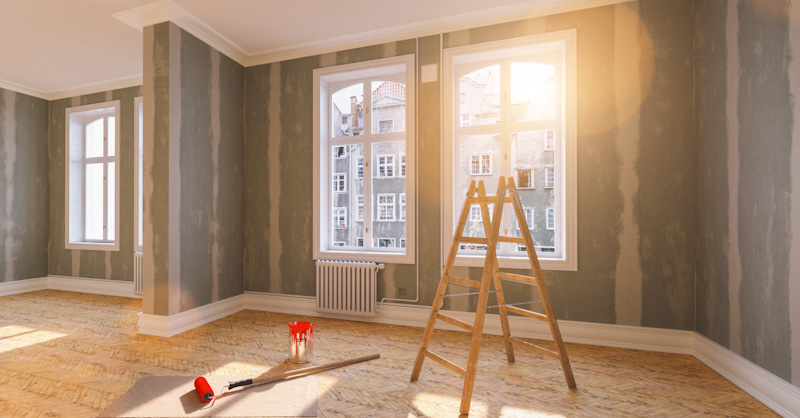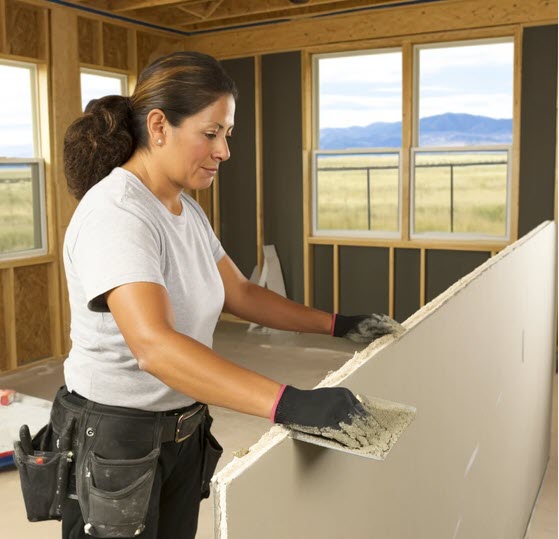High Quality Drywall Installation That Changes Your Interiors
Drywall Installment Facilitated: Tips for Perfect Results
Drywall installation is usually perceived as a daunting job, yet with the best approach and knowledge, it can become a convenient endeavor. Choosing high quality products and preparing the installment location are vital primary steps that establish the foundation for success. Moreover, mastering methods for reducing, hanging, and finishing drywall can substantially affect the outcome. As we discover these vital suggestions, you may discover that even the tiniest adjustments in your strategy can result in remarkably improved outcomes, leaving you to take into consideration how these practices can transform your next job.
Picking the Right Materials
Choosing the appropriate materials for drywall installment is vital to achieving a durable and cosmetically pleasing surface. drywall contractor. The key element, drywall sheets, generally come in different thicknesses, with 1/2-inch sheets being typical for interior wall surfaces. For locations needing extra wetness resistance, such as kitchen areas or restrooms, think about making use of eco-friendly board or cement board, which are particularly developed to stand up to moisture

Additionally, picking the right fasteners-- either nails or screws-- is essential for securing the drywall to the framework. Drywall screws are typically favored for their holding power and decreased danger of standing out. Finally, consider the complements such as primer and paint, which not only boost the look but also secure the drywall from dampness and wear.
Preparing the Setup Area
Prior to beginning the drywall setup process, it is important to prepare the installation location completely. This preparation involves a number of vital steps to guarantee a successful and smooth project. Initially, clear the area of any furniture, appliances, or obstructions that can impede gain access to. A tidy work area lessens the threat of damage to existing products and enables effective movement during installation.
Next, evaluate the walls and ceiling for any type of imperfections, such as fractures, holes, or mold. Address these concerns beforehand; patch any type of problems and permit sufficient time for repair work to completely dry. Additionally, make sure that electric outlets, switches, and plumbing are appropriately positioned and made up, as this will impact drywall placement.
Consider the environmental problems as well. A secure temperature and humidity level are essential for ideal attachment and performance of the drywall products. Use a dehumidifier or heating system to develop appropriate conditions. if essential.
Trimming and Hanging Drywall
The secret to effective drywall installment lies in the exact cutting and dangling of the panels. Utilize a straight edge and an utility blade to rack up the drywall along your dimensions, after that snap it along the scored line for a tidy break.

Constantly work from the top down and delegated right, making sure that you maintain a staggered pattern to boost security. Properly hanging the drywall sets the foundation for a smooth finish, inevitably leading to remarkable cause your drywall task.
Taping and Mudding Techniques
While proper cutting and dangling of drywall look at these guys establishes the phase, the following critical step entails grasping taping and mudding strategies to guarantee a smooth surface. Taping is important for strengthening joints and protecting against fractures; it entails embedding tape into the applied joint compound (mud) Beginning with a quality fiberglass or paper tape, applying the tape over the joint and pressing it into the wet mud utilizing a taping blade, ensuring no air bubbles remain.
When the tape remains in area, use a slim layer of joint compound over the tape, feathering the sides to create a smooth transition to the drywall surface. Permit this layer to completely dry entirely before sanding it lightly to remove blemishes. Repeat this process, using extra layers of mud as required-- usually 2 to 3 layers-- while slowly widening the application location with each layer to attain a seamless appearance.
After the last layer dries, sand the surface area with a fine-grit sandpaper up until smooth. drywall repair. Bear in mind to use a mask throughout fining sand to avoid breathing in dust particles. Mastering these taping and mudding strategies is crucial for accomplishing a professional-quality coating in your drywall installation
Ending Up Touches for Perfection
Accomplishing Click This Link a perfect drywall installment goes beyond taping and mudding; it culminates in the finishing touches that boost the total look. These final actions are vital in ensuring a professional-grade finish that enhances the looks of your space.
Begin by fining sand the dried joint compound to produce a smooth surface area. Use a fine-grit sandpaper and a fining sand block or pole sander for optimum control. Pay particular attention to sides and edges, as these locations tend to require more precise work. After fining sand, wipe down the wall surfaces with a damp cloth to get rid of any type of dirt bits, guaranteeing a clean surface for paint.
Following, apply a guide particularly made for drywall. This step is essential, as it aids seal the joint substance and offers an uniform base for the topcoat. Once the primer dries out, examine for any type of imperfections, and retouch as required.
Conclusion
In final thought, successful drywall installation hinges on the careful option of products, detailed prep work of the setup area, and accurate implementation of cutting and hanging strategies. Proficiency of taping and mudding processes is vital for accomplishing a smooth coating. Additionally, attention to completing touches, consisting of priming and touch-ups, makes sure a professional-grade result. By adhering to these standards, the top quality of workmanship can be substantially improved, adding to the overall visual and functionality of the space.
Drywall installment is typically regarded as a challenging job, yet with the appropriate technique and expertise, it can become a convenient undertaking.Picking the appropriate products for drywall installment is vital to achieving a long lasting and aesthetically pleasing coating.Before starting the drywall setup procedure, it is important to prepare the installment location completely. Mastering these taping find more information and mudding strategies is critical for attaining a professional-quality surface in your drywall installation.
In final thought, effective drywall installment hinges on the careful option of materials, thorough preparation of the installation area, and specific implementation of cutting and hanging techniques.